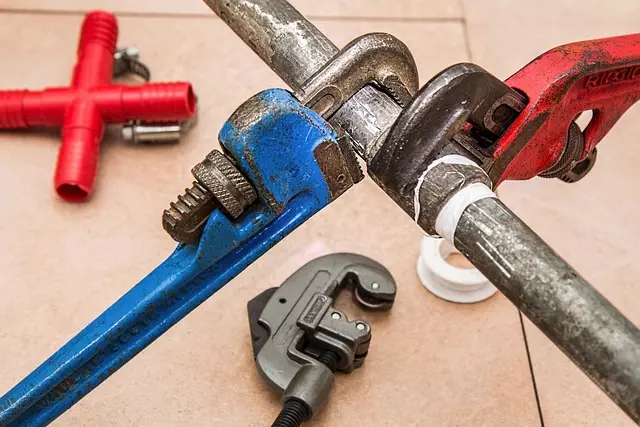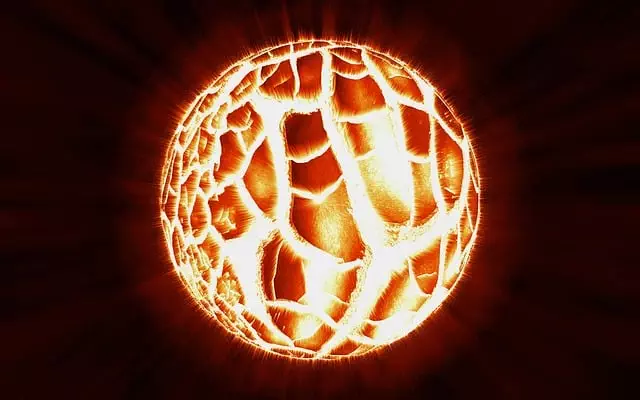Concrete cracks, driven by settlement, shrinkage, and weather, range from hairline to structural defects. Visual inspection and measurement determine crack type and severity, guiding repair methods from sealing/filling to complex reinforcement. Advanced techniques like epoxy injection and carbon fiber wrapping offer robust solutions. Material selection matches damage severity and environmental conditions for lasting repairs. Effective crack repair involves cleaning, filling, or sealing, ensuring long-term stability and structural integrity while preventing costly repeat issues. Regular inspections and timely repair are crucial for concrete longevity.
Concrete cracks can weaken structures, affecting both aesthetics and safety. This comprehensive guide delves into the world of crack repair, offering insights on understanding crack types, assessing damage, and selecting suitable repair methods and materials. We provide a step-by-step approach to effective crack repair, highlight common mistakes to avoid, and offer maintenance tips for long-lasting solutions. By following these expert strategies, you’ll ensure your concrete structures remain sturdy and resilient.
Understanding Concrete Cracks: Causes and Types

Concrete cracks can be both an eyesore and a structural concern, often indicating deeper issues within the concrete itself. Understanding the causes and types of these cracks is pivotal in effective crack repair. There are several factors that contribute to concrete cracking, including settlement, shrinkage, and environmental conditions like freezing and thawing cycles, especially in regions with cold winters.
These cracks can be categorized into various types: hairline cracks, which are typically thin and shallow; diagonal cracks, often appearing as slanted lines; vertical cracks, straight-up and down; and horizontal cracks, usually indicative of severe settlement or load-bearing issues. Each type may require a specific approach for crack repair, ranging from simple filling and sealing to more intricate structural reinforcement techniques.
Assess the Extent of Damage: Crack Repair Evaluation

When addressing concrete structural repair, assessing the extent of damage is a crucial initial step, especially regarding crack repair. Visual inspection should be your first move to gauge the severity and type of cracks present in the concrete structure. Look for surface cracks, which may indicate minor settling or movement, as well as deeper, wider cracks that could signal more significant structural issues.
Focus on identifying the length, width, and depth of cracks using tools like calipers or a crack measurement tool. This evaluation helps determine whether the damage falls into categories requiring different repair methods. For smaller, shallow cracks, crack sealing or filling techniques can be effective. However, for larger, deeper cracks that compromise structural integrity, more advanced repairs like carbon fiber reinforcement or full-depth repairs might be necessary.
Methods for Crack Repair: Techniques and Tools

Concrete structures, over time, can develop cracks due to various factors such as aging, environmental conditions, or structural defects. Addressing these cracks promptly is crucial for maintaining the integrity and longevity of the structure. The good news is that crack repair in concrete structures has evolved with advanced techniques and tools, offering effective solutions. One common method involves using epoxy injection, where a mixture of epoxy resin and hardener is injected into the crack to fill it from the inside out. This technique provides exceptional strength and prevents further damage by resisting water penetration.
Another widely used approach is carbon fiber wrapping, which involves applying a layer of carbon fiber tape over the crack. The fibers act as a composite material, reinforcing the concrete and preventing the crack from spreading. This method is particularly effective for smaller cracks and offers a lightweight solution. Additionally, mechanical methods like jack hammering or chiseling are employed to remove any loose debris and clean the crack depth before filling it with suitable materials, ensuring a robust repair.
Material Selection: Choosing the Right Products for Repair

When undertaking concrete structural repair, particularly for crack repair, material selection is a critical step that cannot be overlooked. The right products can ensure long-lasting and effective repairs, while subpar choices may lead to further damage or even compromise the structure’s integrity. Key considerations include the extent of the damage, environmental conditions, and future exposure. For instance, severe cracks might require stronger, more flexible epoxy resins compared to minor surface defects that can be addressed with conventional cement-based fillers.
Product compatibility with existing concrete is equally vital. Adhesives and sealants must be chosen based on their chemical resistance and ability to bond effectively with the concrete’s composition. Additionally, climate conditions play a significant role; products suitable for colder regions might not perform optimally in hot, dry environments. Therefore, a thorough understanding of both the repair site’s specific needs and product specifications is essential to achieve successful crack repair outcomes.
Step-by-Step Guide to Effectively Repairing Concrete Cracks

Repairing concrete cracks is a crucial step in maintaining and preserving structural integrity. Here’s a step-by-step guide to effectively addressing this common issue. Begin by identifying the type of crack; hairline cracks are typically surface-level while wider cracks indicate deeper structural problems. Next, clean the cracked area thoroughly to remove any debris or loose concrete using a wire brush or high-pressure washer. This ensures proper adhesion for the repair material.
After cleaning, apply an appropriate crack filler or epoxy designed for concrete repair. Follow the manufacturer’s instructions for mixing and application. Fill the crack completely, ensuring no gaps exist. Once filled, slightly overfill the crack to account for shrinkage and allow excess material to be easily removed later. Let the filler cure according to the product specifications before sanding to achieve a smooth finish, matching the surrounding concrete.
Common Mistakes to Avoid During Concrete Structural Repair

Concrete structural repair is a meticulous process, and avoiding common mistakes can significantly impact the long-term integrity of the structure. One of the most visible issues to address is crack repair. While it might seem straightforward, hasty or insufficient crack repair can lead to further damage. Using subpar materials or incorrect techniques can result in cracks reappearing, causing not only aesthetic concerns but also structural instability.
Another frequent error is neglecting the root cause of the problem. Simply patching up visible cracks without addressing underlying issues like poor drainage, excessive moisture, or structural misalignments will likely lead to repeated repairs. Thorough site preparation and understanding the cause are crucial for effective and lasting crack repair.
Maintenance and Prevention: Long-Lasting Concrete Crack Solutions

Concrete structures, like any other construction material, are susceptible to damage over time, with cracks being a common issue. However, proper maintenance and prevention strategies can significantly extend the lifespan of concrete and minimize the need for costly repairs. Regular inspection is key; identifying cracks early allows for less invasive and more effective crack repair methods.
Preventive measures such as proper drainage systems, avoiding excessive moisture, and controlling concrete shrinkage can help deter new cracks from forming. By addressing existing cracks promptly with suitable crack repair techniques, like sealing or filling, the structural integrity of the concrete can be preserved, ensuring safety and longevity for various structures.
